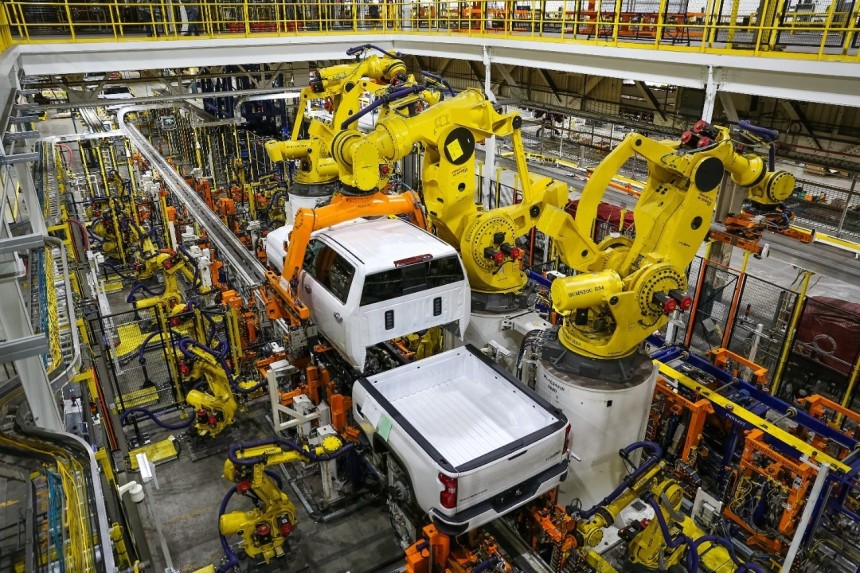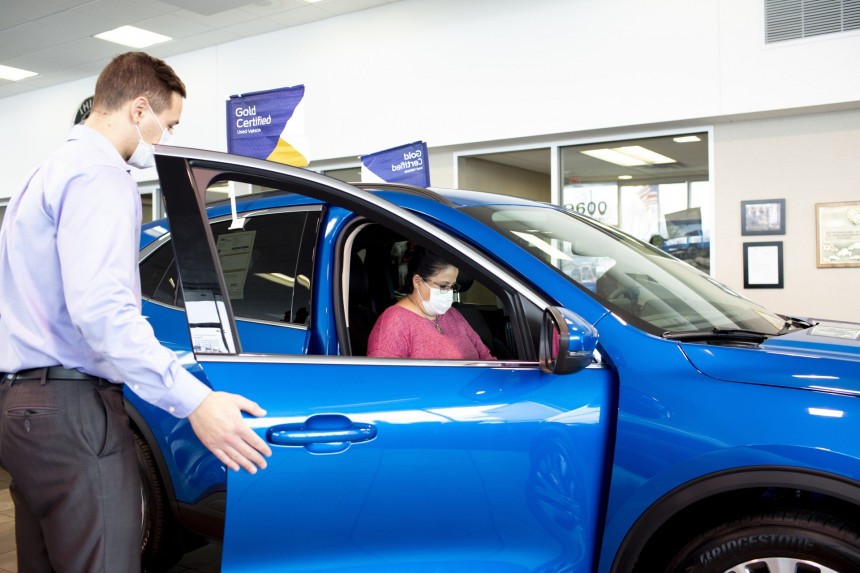According to a 2023 report released on January 4, one quarter of Americans are spending more than 15% of their income on monthly car payments. Even more so, two thirds of them have claimed they had to tighten their belt in other areas of their lives to be able to continue paying for their cars. People also feel less safe on the road since the pandemic hit, and some even started carrying weapons.
The study was done by Jerry, a data-driven app that evaluates what it means (statistically) to be a car owner in the modern-day United States of America. The survey was completed in November 2022 by 1,257 drivers that live across the entire 50 states.
The research covers the entire generational spectrum, starting with the Boomers (with a current age of 69 – 77), and then moving to Gen X (current age 43 to 58, Millenials (born between 1981 and 1996), and ending with the mighty Generation Z. These whippersnappers were born between 1997 and 2012, which in turn means they range in age from 11 up to 26.
Now that we got the generational gap out of the way, let's continue with our study. It shows that 24 percent of Americans intend to get a car in 2023, although it wasn't specified if they were thinking about brand-new or used ones.
Another interesting metric shows that out of the people who want to buy a car, 61 percent prefer a real-life dealership rather than shopping online. That could mean great news for the dealership owners, indicating that they're not going extinct anytime soon, the way the ".com" rise killed the printed newspaper.
Moving on, there's good news for the EV sector, because almost half (49 percent) of participants are interested in buying or leasing one. That's a ten percent increase compared to the previous year. The main "motivational tool" for this interest came in the form of the high prices of conventional fuel.
This being said, 51% of people claim they intend to stick with the ICE vehicles because they're cheaper than EVs. But also because it doesn't take as long to fuel up a regular car, as opposed to charging an EV.
Interestingly enough, one in three people who bought a car last year said that it wasn't what they were hoping to get in the first place. While they wanted to get a new model, the supply constraints forced them to get a used or older version. More so, one in four drivers didn't even get the brand or nameplate they wanted.
While almost 25 percent of drivers aim to get a new or used model in 2023, nearly half aren't interested in getting another car at all. The blame for that falls on high overall prices and interest rates. However, some people would be willing to change their minds if the prices would drop low enough to meet their budgets.
Among the most cited EV brands, Tesla came in first, but two-thirds were interested in other companies, like Ford, Chevy, or Hyundai. This would indicate that Tesla is slowly but surely getting a smaller and smaller piece of the EV sector pie.
Moving on to the main statistics of the day, it looks like 25 percent of Americans are spending more than 15 percent of their income on monthly car payments. Out of them, two-thirds had to cut costs from other aspects of their life to afford the installments. The word unhealthy came up in the study, seeing as though some had to cut back on things like groceries, going out to eat, clothing, movies, games, consoles, other fun stuff, and lastly, traveling or vacations.
This next find is more or less concerning than the others. Nearly one in three Americans think roads have become much more dangerous places since the pandemic hit. Twenty percent have seen someone get out of their car during traffic to confront another driver. In consequence, one in five men sometimes carry a loaded handgun, and nearly one in ten women do the same.
As far as where the overall trends are likely heading, the study's author, Henry Hoenig, shared some unfortunate news. He claims "the disruption we're experiencing in the car market is likely to continue for at least another year or two."
Also according to him, because the supply versus demand issues will continue through 2025, this would in turn mean that while prices for the used car market might budge a bit, they probably won't go down too much.
However, one piece of advice he gave was to literally "shop around" for better offers. Interestingly enough, the survey also showed that more than half of Americans simply don't do that and go for the first thing they see.
To indirectly back up his claims, recent data from Black Book and Kelly Blue Book studies have shown that the average used cars prices at the end of 2022 went up almost 35% compared to the start of that year. The average price for a used car in December was $27,500. Furthermore, in 2022, the U.S. used-car inventory was 15% lower compared to 2021.
The research covers the entire generational spectrum, starting with the Boomers (with a current age of 69 – 77), and then moving to Gen X (current age 43 to 58, Millenials (born between 1981 and 1996), and ending with the mighty Generation Z. These whippersnappers were born between 1997 and 2012, which in turn means they range in age from 11 up to 26.
Now that we got the generational gap out of the way, let's continue with our study. It shows that 24 percent of Americans intend to get a car in 2023, although it wasn't specified if they were thinking about brand-new or used ones.
Another interesting metric shows that out of the people who want to buy a car, 61 percent prefer a real-life dealership rather than shopping online. That could mean great news for the dealership owners, indicating that they're not going extinct anytime soon, the way the ".com" rise killed the printed newspaper.
Moving on, there's good news for the EV sector, because almost half (49 percent) of participants are interested in buying or leasing one. That's a ten percent increase compared to the previous year. The main "motivational tool" for this interest came in the form of the high prices of conventional fuel.
Interestingly enough, one in three people who bought a car last year said that it wasn't what they were hoping to get in the first place. While they wanted to get a new model, the supply constraints forced them to get a used or older version. More so, one in four drivers didn't even get the brand or nameplate they wanted.
While almost 25 percent of drivers aim to get a new or used model in 2023, nearly half aren't interested in getting another car at all. The blame for that falls on high overall prices and interest rates. However, some people would be willing to change their minds if the prices would drop low enough to meet their budgets.
Among the most cited EV brands, Tesla came in first, but two-thirds were interested in other companies, like Ford, Chevy, or Hyundai. This would indicate that Tesla is slowly but surely getting a smaller and smaller piece of the EV sector pie.
Moving on to the main statistics of the day, it looks like 25 percent of Americans are spending more than 15 percent of their income on monthly car payments. Out of them, two-thirds had to cut costs from other aspects of their life to afford the installments. The word unhealthy came up in the study, seeing as though some had to cut back on things like groceries, going out to eat, clothing, movies, games, consoles, other fun stuff, and lastly, traveling or vacations.
As far as where the overall trends are likely heading, the study's author, Henry Hoenig, shared some unfortunate news. He claims "the disruption we're experiencing in the car market is likely to continue for at least another year or two."
Also according to him, because the supply versus demand issues will continue through 2025, this would in turn mean that while prices for the used car market might budge a bit, they probably won't go down too much.
However, one piece of advice he gave was to literally "shop around" for better offers. Interestingly enough, the survey also showed that more than half of Americans simply don't do that and go for the first thing they see.
To indirectly back up his claims, recent data from Black Book and Kelly Blue Book studies have shown that the average used cars prices at the end of 2022 went up almost 35% compared to the start of that year. The average price for a used car in December was $27,500. Furthermore, in 2022, the U.S. used-car inventory was 15% lower compared to 2021.











